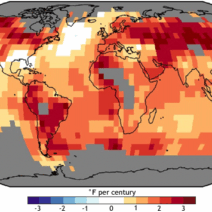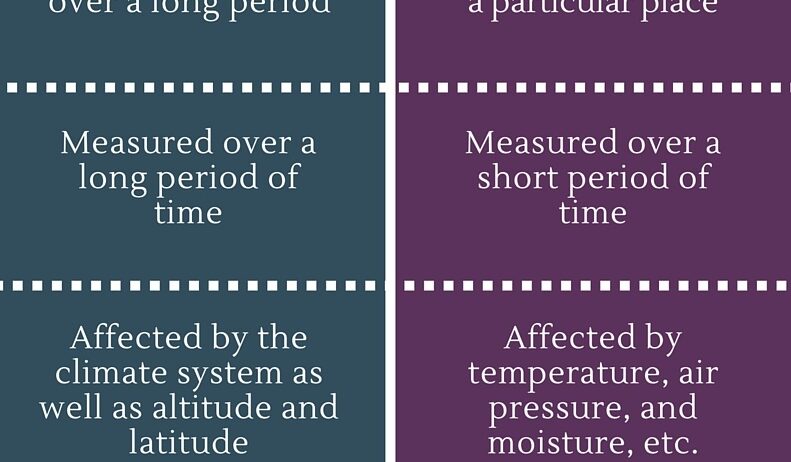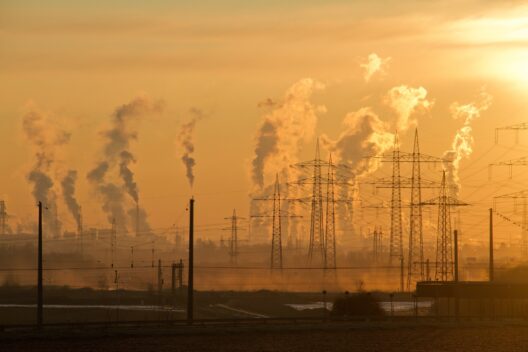The delicate dance between climate and weather is akin to the difference between the rhythm of a symphony and the spontaneous notes of a jazz improvisation. While they both pertain to atmospheric conditions, their scales, implications, and meanings vary significantly. Understanding these differences is essential for informed discourse on environmental issues, particularly as global temperatures rise and extreme weather events become more frequent.
Defining Weather and Climate
Weather refers to the short-term atmospheric conditions in a specific area at a given time. It encompasses variables such as temperature, humidity, precipitation, wind speed, and atmospheric pressure. For instance, a rainy afternoon or a hot summer day exemplifies local weather phenomena. These atmospheric caprices can change remarkably from hour to hour and day to day, much like the shifting moods of a character in a gripping novel.
In contrast, climate is the long-term average of weather patterns over extended periods, typically 30 years or more. It is the tapestry woven from countless weather events, shaping various geographical regions into distinct entities—tropical, arid, temperate, or polar. If weather is the play-by-play commentary of a sports event, climate is the season’s overall performance evaluation, revealing trends that inform us about the planet’s health.
The Temporal Scale: Hours Versus Decades
The stark difference in temporal scale between weather and climate highlights their unique appeals. Weather operates on a microcosmic level; it is fleeting and immediate, influencing daily decisions such as whether to wear a jacket or an umbrella. It is, in essence, the unpredictable drama unfolding around us. Conversely, climate exists on a macrocosmic scale, lingering in the background as a steadfast narrative. It reflects the overarching conditions that define regions and can shift only over generations or centuries, often as a result of cumulative weather patterns and human activities.
Geographical Influence
From a geographical perspective, weather and climate also diverge significantly. Weather conditions can transform dramatically over relatively short distances—think of the snow-capped mountains overshadowing balmy beach resorts just miles apart. Each locale has its own weather nuances dictated by topography, elevation, and proximity to bodies of water. This variability can inspire wonder and often leads to microclimates, unique in their atmospheric phenomena.
On the other hand, climate is more uniform within a given region, despite minor variations. The Mediterranean climate, for instance, uniformly exhibits warm, dry summers and mild, wet winters. Thus, while a thunderstorm might engulf a city in one day, the climate of that city remains consistent in its seasonal patterns. Recognizing this allows individuals to adopt sustainable practices suited to their region, ranging from water conservation in arid climates to preparing for hurricanes in coastal areas.
Human Impacts and Environmental Consequences
Both weather and climate are influenced by human activities, but the implications differ tremendously. Local weather patterns can be altered through immediate actions—urban heat islands resulting from extensive concrete landscapes, for example, can lead to higher temperatures in cities compared to surrounding rural areas. This modification exemplifies how human intervention can have instantaneous repercussions on atmospheric conditions.
Climate change, however, pertains to the gradual alterations of climate patterns over extended periods, largely attributed to anthropogenic activities like fossil fuel combustion, deforestation, and industrial processes. Rising global temperatures are leading to altered precipitation patterns, melting ice caps, and increased frequency of extreme weather events. Such irreversible changes necessitate a profound transformation in global perspectives, urging a shift towards sustainability.
The Interrelationship
The relationship between weather and climate is undeniably symbiotic and cyclical. Weather serves as tangible evidence of climate patterns, revealing their influence in real-time. A kid marvels at the first snowfall of winter, without recognizing that this meteorological marvel is part of a larger climatic narrative unfolding over decades. Conversely, climate encapsulates the data that forecasts weather conditions, providing a framework for understanding atmospheric changes and preparing society for future outcomes.
Conclusion: Importance of Understanding
Grasping the nuances between weather and climate is crucial in combating misinformation and cultivating environmental stewardship. With climate change at the forefront of global discourse, recognizing the implications of both entities enriches public understanding and galvanizes collective action. Awareness fosters responsible decision-making, challenging the notion of isolated incidents of unusual weather as merely anomalies rather than warnings of underlying climatic shifts.
As individuals become more conscious of the environmental changes surrounding them, they are encouraged to engage with sustainable practices and advocate for policies aimed at preserving our planet. In summation, while weather provides a fleeting glimpse into our atmosphere, climate offers a comprehensive understanding of its long-term journey. The differentiation between these two concepts unveils pathways for societal adaptation and resilience as we navigate the complexities of a changing environment.








